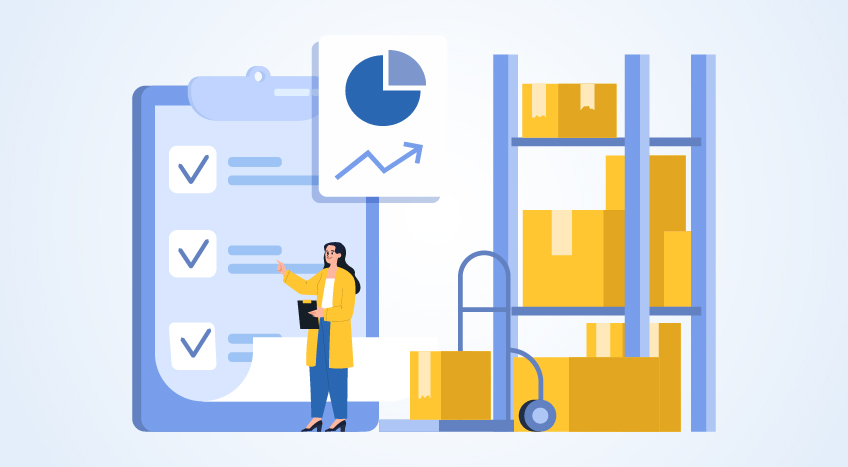Inventory forecasting is an important aspect of inventory management on which small businesses need to focus. Properly forecasting your inventory can increase your profits, reduce your costs, and prevent stock-out problems. How can inventory forecasting help small business? Find out more in the sections below.
Stock forecasting
Inventory forecasting is the process of predicting future demand for stocks based on past trends and historical patterns. This allows you to accurately forecast how much stock of a product you will need in the future, and plan your purchases accordingly. You can avoid under-stocking and over-stocking problems. You can ensure that your customers always receive the products they need on time, thus reducing any customer complaints.
If you know the exact amount of stock that you will need to sell different products, then you can better plan your sales and improve your profitability. You don’t want your customers to cancel their order because of non-availability or to face problems in the supply cycle as a small business. Inventory forecasting can help you eliminate these bottlenecks, and plan your inventory more efficiently.
What are the factors that affect inventory forecasting?
What factors and data are needed to forecast your stock needs? Here are some of the most important ones that should be highlighted.
Inventory levels in small businesses
Current Purchase Orders that are awaiting payment from customers
Past trends showing the preferences and demands of customers for certain products
Sales volume and past trends
Customers’ feedback on certain products
Stock levels a small business is allowed to hold
Inventory forecasting is based on data analysis and draws conclusions to estimate the future need for stock.
Demand planning and inventory forecasting – are they the same thing?
In many circles of business (big or small), inventory forecasting and planning demand are interchangeable terms. Both are important tools for a larger department (inventory control), but they are different. Small businesses must implement both concepts to achieve the desired results, such as increased profits, reduced losses of sales, better planning inventory costs, and more.
Inventory forecasting is more concerned with forecasting future orders from small businesses. Demand planning, on the other hand, involves predicting the amount of stock needed to meet these orders.
Small businesses can benefit from four types of forecasting methods that are commonly used.
You can plan your inventory more effectively if you use these methods for forecasting inventory.
Trend forecasting
You can plan your stock based on this trend. You can then buy more of the products that are selling like hotcakes. Also, you can get more information about products that aren’t selling as quickly as others. This method of forecasting inventory uses past sales data to give you detailed reports about what you can expect in the future.
Visual forecasting
This method is a visual, extended and attractive representation of the information presented by the previous methods. These graphical representations allow small business owners to examine past sales trends and deduce patterns.
Forecasting qualitatively
You may not have historical data on which to base your forecasts of inventory if you are just starting your business. You can use the qualitative method of inventory forecasting in this situation. Forecasts are based on market trends, economic indicators, the preferences of individual customers, market research and customer reviews. These reviews and researches can be used to plan your inventory, since they are the best methods for businesses that are just starting out or those looking to introduce new products.
Quantitative Forecasting
The accuracy of this type of forecasting is the highest of any method, because it only relies on numbers. Here, no trends, patterns or preferences are taken into account. To predict future inventory demand, your sales figures from the last year or quarter (whichever period you have available) will be analyzed in depth. Quantitative forecasting, which is based on previous sales data, is very accurate in predicting the demand for specific products.
Bottom Line
Inventory forecasting is a key factor in improving small business profitability and reducing costs. Businesses should use inventory management software and take advantage of technology to better manage their inventory. If you manage your inventory well, there are no customer complaints and your business will be in good shape.
Read More




